Logan Square
bricks & cement
implement
casitas y bodeguitas;
scents of the Latin diaspora –
olfactory Cuban paintings
and gathering of elders
at Café con Leche;
rice & beans & empanadas
salsa y reggaeton jukebox,
santeria summonings.

Logan Square
bricks & cement
implement
casitas y bodeguitas;
scents of the Latin diaspora –
olfactory Cuban paintings
and gathering of elders
at Café con Leche;
rice & beans & empanadas
salsa y reggaeton jukebox,
santeria summonings.
Telepathikontinuum The junglist diaspora, fluctuations in rhyme generating whirling ⟳ cross-joint conscience between pulsating vibes ecstatically reverberating baroque riddims... Clear cathedrals emit generational silence, abstractions of sound - black breaks blind lust-filled nights, pulsed syncretism truth beyond means.
Refuge my words are my refuge; a place where I can build havens and monuments that are both mobile and stabilizing. time is impermanent; each syllable constitutes a tertiary universe independent of lack, yet significant. my refuge is open; sourced from a sacred space beyond the Gaelic imaginary.
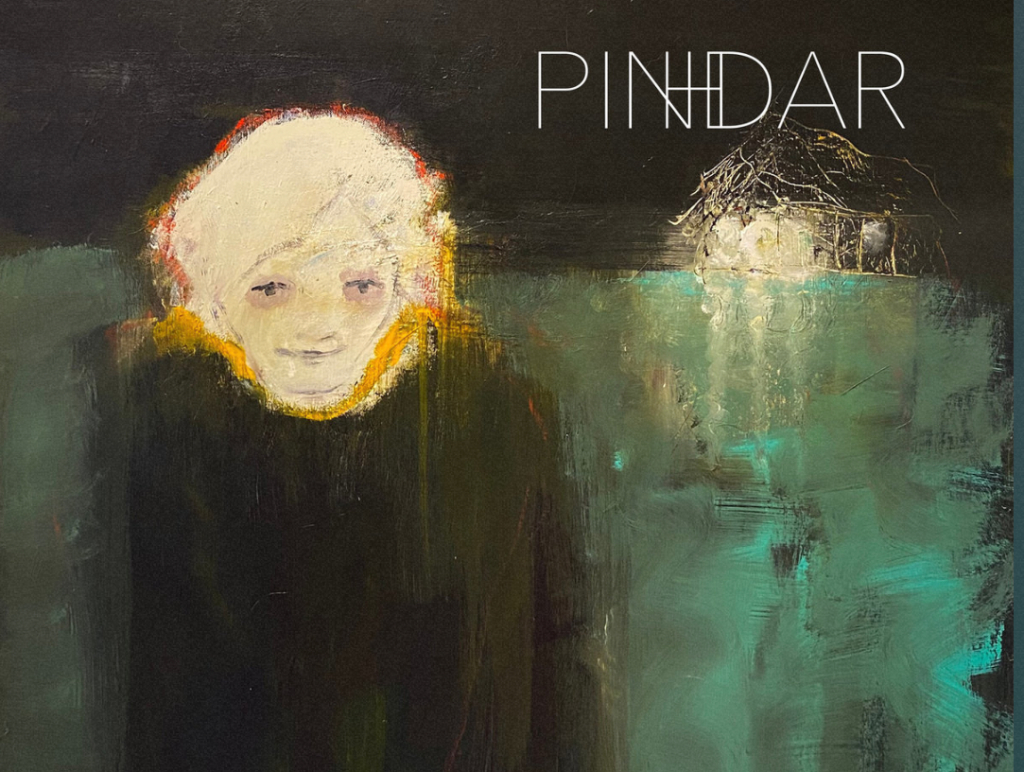
PINHDAR returns with the ethereal A Sparkle On The Dark Water.
The album begins In The Woods with skipping electric synths, prickly guitar licks and dragging baselines carrying Cecilia’s angst into the Cold River where pummeling kick drums levitate Max’s winding guitar licks.
Home drags in with spatial chords punctuated with sparse percussion punctuating longing lyrics as Cecilia paints a portrait of lost dwellings that seem interdimensional.
The subterranean Little Light dances into deeper waters:
Will we be able to survive and
Shine in the dark?
Maybe…or perhaps not, for there exist harmonic Murderers of A Dying God that are:
Shouting
Despairing
Crying
Freaking out
Going mad
Is our fate as Humans death or merely madness?
Solanin opens with mourning synths as Cecilia whispers her urban observations accompanied by Max’s tasteful guitar plucks followed by orchestral notes and despairing tones;
We are like raindrops in a storm
Just before the big fall
We are like raindrops in a storm
Just before the big fall
then fades into a synthesized sea of Frozen Roses where choppy drums smatter Cecilia’s retrospective lament into haunting harmonies:
Ask the wind that whispers its
moans why the sun rises,
the stars shine but the darkness
remains
Abysses displays beautiful guitar chords over a marching drum that crescendos into hard rock At the Gates Of Dawn;
Darkness needs to be deep
for the the first stars to appear
mystical guitar licks, lazy drums and a silent piano.
Purchase: https://pinhdar.bandcamp.com/album/a-sparkle-on-the-dark-water
Source: fruitsdemerrecords.com
Curated by Kahlil Crawford, this month’s issue features works about electronic music, the intersection of art, creativity, technology and healing, and electronic music composition itself.
‘We must break out of this limited circle of sounds and conquer the infinite variety of noise-sounds.’
Luigi Russolo (1913)
We start off with Bakhora Bakhtiyorova and Tasirul Islam whom provide basic introductions to the contemporary roots of electronic music and technology. Next, Chris Esparza, provides an insider view of rave art history in the midwestern United States – a visual preamble to the upcoming Viva Acid event in Chicago – the home of House music.
Delaware artist/poet Robert Fleming‘s pop art illustrates prominent discotheques in Ibiza, Berlin, London and New York then Metariddim converses with DJ Toyacoyah about indigeneity in and around the electronic music scene. Meanwhile, Zimbabwean poet Abigirl Phiri waxes philosophic on the (electronic) music contributions of Australian vocalist Sia and South Africa’s Makhadzisa.
‘Personally, for my conceptions, I need an entirely new medium of expression: a sound-producing machine.’
Edgard Varèse (1939)
Photographers Daniel de Culla and Isabel Gomez de Diego offer up images of nature, religion and wedding music while poets Kristy Ann Raines and Maja Milojkovic recite the melodious connection between soul, love and music. Mahbub Alam continues this theme with his personal connection to music.
Not limited to music, electronica encompasses our everyday mobile devices as illustrated by Don Bormon. Sabrid Jahan Mahin takes things a step further with a deep technological discussion between father and son while Nurujjaman articulates the lifeways of music and technology on a whole.
‘Many musicians have dreamed of compact technological boxes, inside which all audible sounds, including noise, would be ready to come forth at the command of the composer.’
John Cage (1942)
Yahya Azeroglu explains how music nourishes the soul and provides quotes from historical figures to support this notion. Muhammed Aamir spins a tale of skateboarding, playlists and mixtapes then Jannae Jordan explores the deeper divinity of music frequencies. Tanvir Islam envisions a pro-technological future and DJ Kittenbear sonically reminds us that the beat goes on…
On September 3, 2023, I attended the Jungle got Soul event in Chicago – hosted by the dnbid crew (DJ’s Stunna, Subverb, Renan, Skrimshaw and Occum’s Razor):
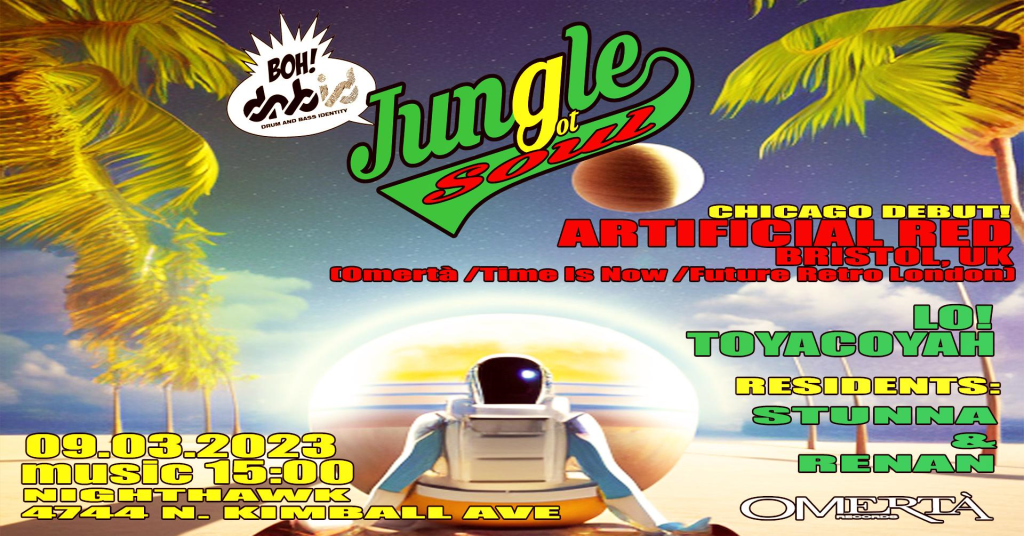
Three sets in, I was impressed by the ambient sounds of DJ Toyacoyah. I looked her up online to learn more about her and saw that she was a member of the Comanche Nation – a rarity, so I decided to have an impromptu dialog with her at the bar where we dished on raves vs. pow-wows, West Coast DJ culture, Brazilian jungle/drum ‘n bass, indigenous hip-hop, Mixed-blood politics, Native representation, tribalism, (sound) medicine, colorism/racism, etc.
M: OK, let’s start with your name. What does it mean?
T: It means “Returning from the War”. I’m named after a great great grandma on my dad’s side. Her name was actually spelled “Toyackkoah”. So, story goes, back in times of war, the women would help the men and provide weapons and reinforcements if needed; so on her way back from helping refill ammunition and what not, my ancestor was born. I think it literally might mean “returning from the mountain” because I’ve seen Toya used as a mountain name before.
M: Cool. So what does it mean to you to be a Comanche DJ in Chicago’s Jungle/Drum ‘n Bass (DnB) scene?
T: Yeah well, honestly, I didn’t grow up 100% around Comanche Nation just because, like, I was born there – born in the Indian hospital – but I only lived in Oklahoma until 7 years and then I moved off to Arizona, California; but I went back to Oklahoma for college. So that’s kinda how I got back in touch with my roots ‘cause there’s…a lot of Natives that go to college up at OU but yeah, no, I definitely see the parallels between pow-wow music and rave culture and stuff like that. People always ask me about that. I’m, like, “definitely”…so yeah, I definitely see the appeal obviously ‘cause I watched my relatives dance – definitely percussion was heavy in the mix, right? So no, who knows? There might be something in the DNA ‘cause I listened to house music, freestyle and all that stuff growing up; but the first time I heard jungle, I was like, “Yo, what the hell is this?” and I didn’t know what it was, right? I went back later, I’m like, “that was ragga jungle.” I’m like, “that was straight up, like, the craziest thing I ever heard in my life.” I really wish I knew what song was playing, who the DJ was but it was like ‘95 – San Francisco. That’s where I first started and my life was pretty much changed after that.
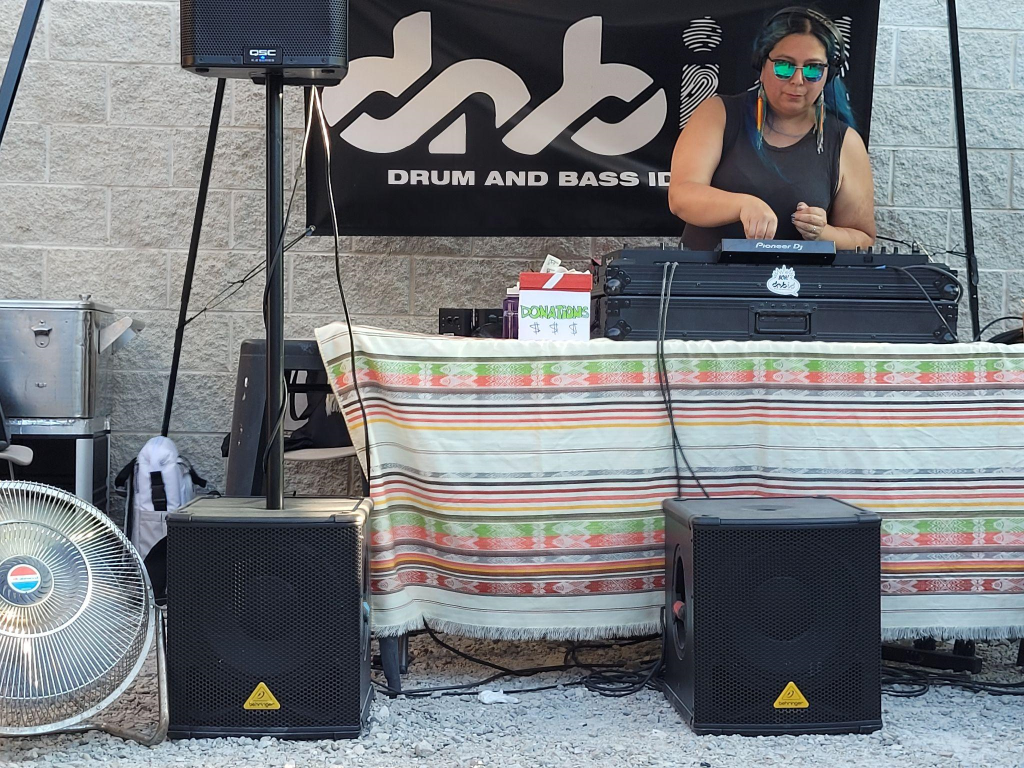
DJ Toyacoyah on the decks @ Jungle got Soul in Chicago.
M: You bring up an interesting point about the cultural or subcultural, at this point, parallels between the Jungle/DnB scene and the First Nations scene – raves versus pow-wows. I think every Junglist has that moment that they can identify where they were like, “Whoa, what is this?”
T: Yeah.
M: “How does this relate to me? I’m here, it’s real…and, now, what am I gonna do?” Obviously, you chose to DJ.
T: Yeah, so I’ve been buying records since I was a kid – like in the ‘80’s. It was always, like hip-hop or, like I said, freestyle or hip-house or whatever; so I was interested in electronic music but, just, I didn’t know it was a DJ culture thing, right?
M: Right.
T: I listened to the radio a lot in California and they’d always have people mixing but I always felt it was more hip-hop; so I knew that culture – turntables and all of that, but I was like, “Oh OK, there’s, like, a whole other thing happening here,” right?
M: Right.
T: So, when I got to college, I started buying stuff and then I went to the radio program there; so then I had a radio show and that’s where I started playing a lot of drum ‘n bass. That’s how I got my practice.
So funny enough the radio station at the time was KXOU but it was only on cable TV since they didn’t have a license or whatever. There was an NPR station I interned at, too, called KGOU. But for the show I had on the cable TV part it was called “Recipe for Chaos”. I think I have an old VHS tape of one night somewhere (laughs). Dragged my 1200s and mixer into the studio for it.
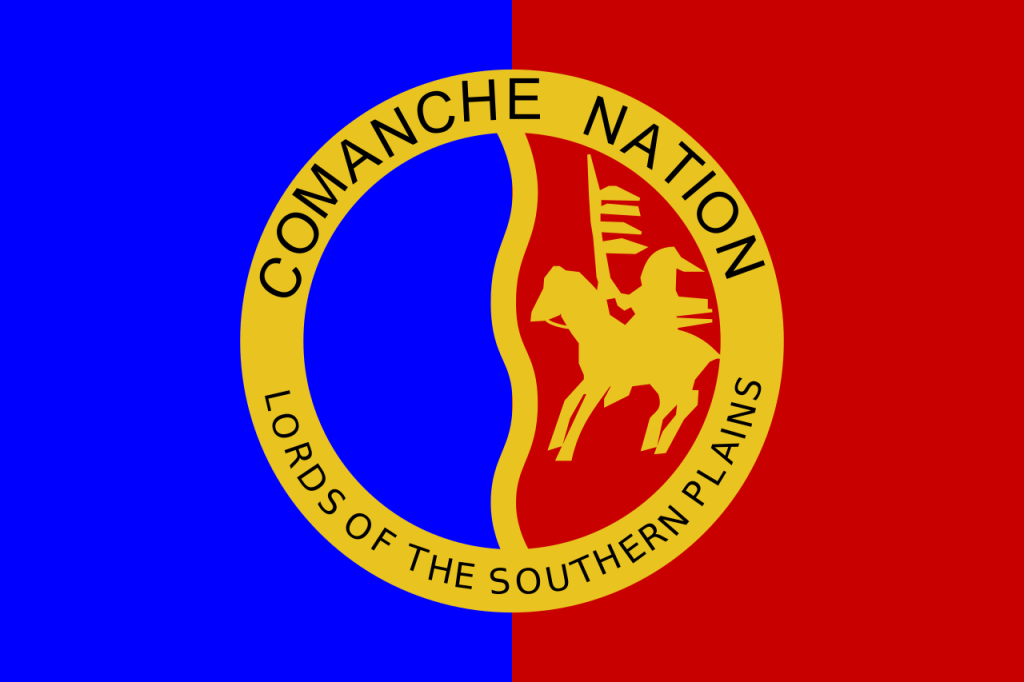
M: What’s the scene like down there in Oklahoma?
T: So, funny enough, there’s a really big scene and it was mainly a lot of hip-hop and rave crossover. One of the biggest crews that was throwing parties was the UAT crew and they’re actually the ones that made me DJ.
The very first time I got a gig was because my friend was throwing a party and they put my name on a flyer and didn’t tell me until, like, a month before the party. He said, “by the way, you’re playing this and start practicing now. And I was like, “WTF, dude?” but I needed that push because I would never do something like that – you know what I mean? – like on my own, so I appreciate that he did that for me and, yeah, that was my first gig – January ‘98 – and no looking back since then.
M: That’s what’s up. Do you feel like a lot of other First Nations people down there kind of had that same synergistic feeling or experience of, like, the rave culture integrated with the pow-wow?
T: Especially if they were into hip-hop culture. I don’t know as far as rave goes, but I definitely noticed it more recently. But that’s also because of the internet, you know – you’re a little more in tune with what other people are doing and I think it helps that people, like in Canada – First Nations – where, like, A Tribe Called Red (are from). They definitely helped solidify…rally the troops…
M: …Yeah, right. Exactly…around hip-hop. Rebel Diaz* is another one representing the First Nations down in Latin America. They have a show coming up at the Old Town School of Folk Music.
T: Oh yeah, I know Indigenous Peoples’ Day is coming up, so they’re having a big…what is it?…one-day concert. I remember they had something last year. I wanted to go to it…but, no, I’m really excited because, like I said, I feel like I see more hip-hop with Indigenous culture. There’s, like, a big appeal there. But that kind of probably goes with social awareness and issues like that. It’s a way to express yourself, you know what I mean?
M: Yeah, totally.
T: So, I feel like that’s a big parallel culture with, like, bringing sh!t up.
M: Definitely.
T: But yeah, no, I actually just played in Minneapolis like two weeks ago (?)
M: Oh Nice! Largest Native urban population in the “United States” (Turtle Island).
T: Well, that was the thing, right? So I remember I saw on the event page, this girl was like, “Wait, she’s indigenous like me? I’m totally coming out.” And she’s like “Representation Matters.” She was so excited. I didn’t know this girl, right? So, the day of the show…I didn’t see that post until the day of…and I was like, “Oh that’s so cute.” And, so, she actually came up while I was DJ’ing. She put a sticker on the CDJs, and it was…this medicine wheel sticker.
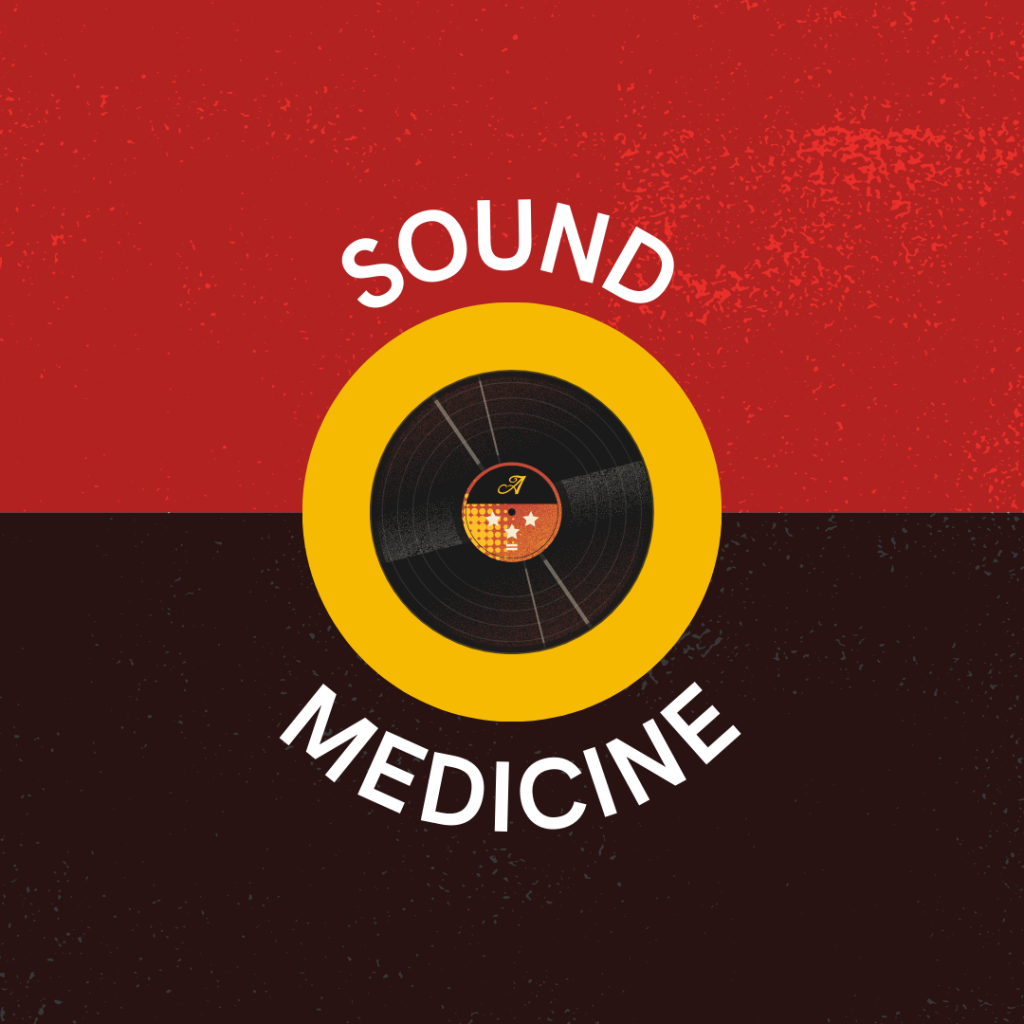
And I was like, “Oh, is that the girl?” And so I waited until after the show and talked to her and now we’re Facebook friends. But I was like, “I appreciate that” because I didn’t really have too many Native friends in the scene. One of my best friends used to dance with me alot in Oklahoma but, you know, you go somewhere else and I’m usually the one person in the room, right?
M: Right. Exactly!
T: Like if I look around right now, I’m probably the only Native person…but I get used to that – whatever. So it was nice when you get to be with people, like, in a similar situation…
M: Totally. 100%. Now I think, with that said, there’s also that unspoken presence as well, right? As a DJ, you talk about mixing genres and mixing records, but there’s also the mixed-blood, right? Those of us that, you know, have mixed-blood, but may not be enrolled, may not necessarily be accepted in the sovereign nations, so how do you speak to that? As a mixologist, how do you speak to that with respect to the mixed-blood people and how they express themselves whether in the underground culture or in the mainstream culture?
T: Yeah, no, it’s definitely difficult. It’s a touchy situation because…there’s definitely colorism and whatever within indigenous cultures – (in) the Black community for sure. But, like – I don’t know – I think there’s something that you can get from all the cultures and all the different music. A shift sharing is a big part of our culture too. Like, someone comes into your home, you’re sharing food; so, as a DJ, you’re sharing…the music, the love – so I don’t know.
M: It’s something to put out there – something that’s maybe not discussed as often as it should be, but I think that the arts have always been a means to at least communicate the reality of such situations that ultimately bring that medicine that the tribes do talk about. A lot of times, the more difficult conversations, the more difficult confrontations, the more difficult situations, both within and beyond First Nations communities, can bring about that medicine, right? Sometimes you have to break the bone and reset it correctly in order for it to grow in its proper nature.
T: Yeah, no, and I think that there’s alot of things that we can all learn from each other and that was the bad thing about what happened in this country when it was “founded”, right? People were already here, but we’re gonna say, in quotes, “founded”. If everyone had tried to get along, I think that things would be way better; but it’s always “us against them”, “who can you trust”, “blah blah blah”…
I prefer the places where you can have some acceptance because alot of times, with Native cultures, there’d be wars going on – whatever, but if someone was captured they were brought into the community, right? Like, “OK, you’re one of us now,” back in the day, you know? So I feel like there’s that whole, like you were saying, acceptance, tribalism – whatever, like “you’re one of us now.” That’s kind of how it is in the dance music community, like “Oh, you like drum ‘n bass? You’re one of us now.” Because, like, we’re few and far between, I feel like.
K: Totally, and speaking of medicine, for me personally, drum ‘n bass has always had somewhat of a healing impact and place, and effect in my life. Do you feel that drum ‘n bass has that capacity to heal some of those divisions or some of those wounds that exist within the First Nations community as well as beyond the First Nations community?
T: Oh yeah, for sure, I mean, there’s musical therapy, right? Like, there’s people that specialize in that stuff. So yeah, I feel like the more we share, the more we create, the more we’ll have in common. You know? That’s where we find our common ground, is on the dance floor.
K: That’s cool. Do you see yourself, in the near future, maybe bringing the drum ‘n bass culture – sound – maybe into the pow-wow community or somehow, you know, bringing it a little bit closer?
T: It would be cool just because I feel like there’s not enough…like you’ll see – especially in the UK, right? – you’ll see alot of record labels or song titles that borrow from tribes, but they still have that weird, stereotypical view of what that means ‘cause they’re not around it. That’s fine, they’re in the UK – whatever, but there’s this one kind of crazy…I’ve seen it before, Redskin Records is the name of it. I’ve seen it. The caricature is not very flattering. People have called them out on line but, right now, if you say something, like, “Oh no, ‘woke’ is a bad word.” It’s like, “no, you’re just trying to say this is not how you need to be talking about people, representing people”; but, of course, it’s like people are still set in their ways, right? So, things like that, I think there’s still a long ways to go. People just don’t know that sensitivity ‘cause they’re not around it all the time, right? So, yeah, it’d be cool to have more representation in the scene. Bring more people into it – whatever.
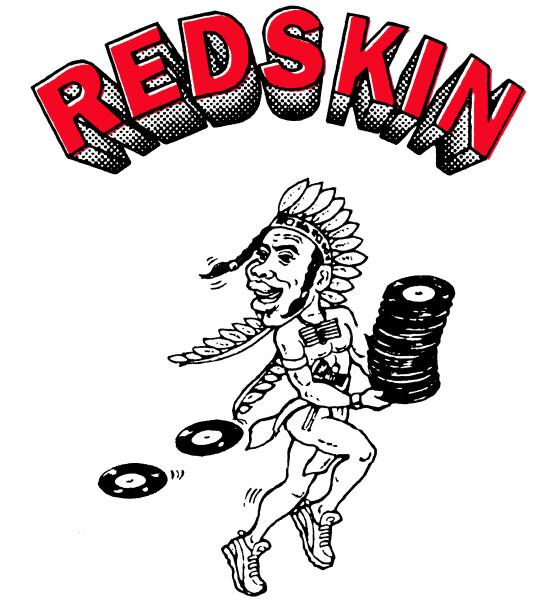
Boycott Redskin Records!
T: And, like, speaking of, like, indigenous cultures – I’ve never played for a crowd, right (?), that’s like mainly indigenous or like mainly even more than just me, right?
M: Right.
T: But someone reached out to me this past year – and I haven’t done it yet, but I’m actually gonna play for this Native American museum (Eiteljorg Museum) in Indianapolis. I’ve never done anything like this…but I was surprised because someone knew I was Comanche and they’re like, “Hey, we’re looking for an indigenous DJ and there’s one in Chicago”, so I’m actually gonna go there in November to help with this exhibition, so it’s gonna be, like, the first time I’ve played for something like that. I’m excited. I’m gonna pick out different music, obviously, but still, you know, some good tribal music, world music. I feel like I could also expand it a little bit.
M: Yeah, definitely. No doubt, absolutely. I think the world music community, there’s a place for you in that community. I know they have their festival comin’ up here soon. That’s why I mentioned Rebel Diaz – they’re part of that. They’re celebrating like 50 years of an uprising (coup) in Chile.
T: OK cool.
M: Yeah, I think that’s an avenue that could definitely serve as a bridge between, you know, the First Nations community and the underground jungle/dnb community.
T: And also in that spectrum, too, I really love Brazilian music. When I was like…you know, early 2000’s there was alot of Brazilian drum ‘n bass that came out. I was so inspired by it that I actually did study abroad in Brazil. I used to DJ down there, but if you look at the USA and Brazil there’s alot of parallels of indigenous culture, settlers came in, slave trade was happening, and it was really interesting to see how the music – you know, kind of similar. We’ve got jazz, they’ve got bossa nova, you know. I was very interested to see, like, how those cultures came about because of what they went through.
M: Well the majority of the African captives, actually, were landed in Brazil and Colombia.
T: Yeah, Salvador was where I was and that was a big part of what I saw there.
M: Exactly, exactly. So too often, in the US, we think we’re the epicenter of that, but we’re far from it. We’re a very small percentage.
T: Nope. Yeah. And that’s why I really wanted to go there – just to see how they treated their indigenous culture because it was definitely like they didn’t really talk about it. It was so weird. It was like, “Oh we’re all Brazilian” and I was like, “Nooo”, you know?
M: Yeah. I mean there was that immediate fusion of the African captives and the First Nations there and, for example, in Jamaica you have the Maroons. And in Canada you have the Métis and here, obviously, you have the Mixed-bloods here and all throughout the Americas, really. So it is a quote unquote “Pan-American” or Pan-Turtle Island diaspora that is both inclusive of indigenous and Afro-Indigenous communities, but also the integration of the two, which needs to be illuminated more; and I think, through music, we can heal some of those divides and get back to those roots.
T: And that’s my favorite part, just hearing what people do – that whole call and response with music. It’s like I’ll have this, I’ll have that – ooohh, let me put my little vocal element in there.” That’s f#cking bad@ss. I feel like that happens alot. So, it’s like we can relate more with music than, I feel like, in other different ways.
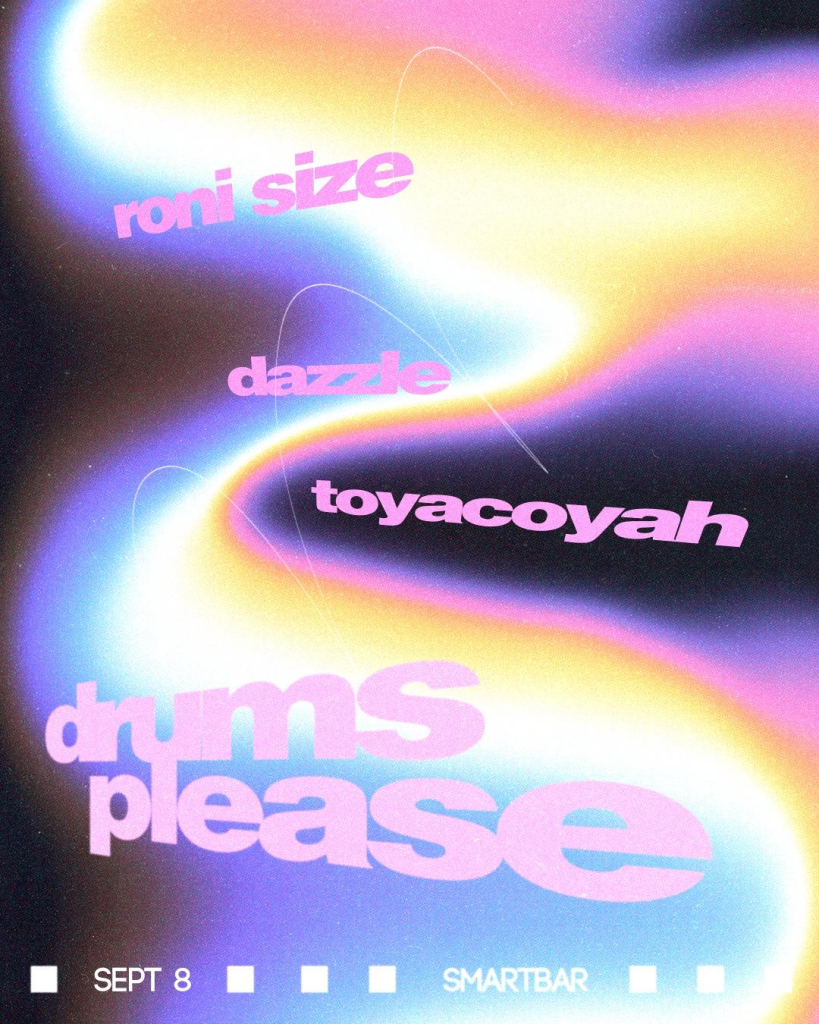
* Rebel Diaz brothers RodStarz and G1 grew up in Chicago and came up in The South Bronx, NY. They are the sons of political refugees from Chile who fled a CIA-funded dictatorship in the 1970s. They have been doing rebel rap since the Clinton era, sharing their story and those of their people; el barrio, the hood, the poor, los inmigrantes. The brothers' bilingual sound has been shaped by pieces of South American folk, house, and latin percussion gettin' down with boom-bap, breaks, and 808s.“The bookstore is a haven for the heterodox.”
Whilst chronicling the history of professional bookselling and book buying, and drawing from the chevrusas (study groups) of his Hebrew youth, Jeff Deutsch passionately advocates for himself and his fellow booksellers (or les levreurs de livres) as essential in this century.
He wisely circumvents Amazon-bashing when establishing his case for a better-developed bookselling culture, which would entail a non-retail approach to selling books. Perhaps best articulated as one that would “rebuild deliberately what had first developed organically in response to the limits of space.”
Jeff aptly distinguishes between “serious” and casual book-browsing, as “exceptional bookstores both reflect and create their communities.” He postulates that the “good” bookstore “is about interiority” as he guides us through the existentiality of bookstore design and architecture:
“…the shape of the bookstore operates…akin to a literary form.”
Jeff offers several anecdotes to what this form looks like. My favorite is the bookstore as zuihitsu (following the brush); or is it ēnso – a freeing of the enlightened mind to let the body create? If so, humanity has severely underestimated the value of the bookshop for centuries now, which can explain the subpar human condition.
According to Jeff, selective uniquity is rampant in the book-buying culture. He reminds us that “book discovery…is a highly individualized endeavor” leading us to an anticipated future immersed in literary utopia. This zen and/or rapture of book browsing involves searching “the millions of grains through sheets of interrupting water.”
Yet like a book, Jeff suggests, “the imagination is…portable”. It can be postulated that the bookstore is where the two meet and, with a purchase, marry. This marriage of the “life of the mind” is sanctified and consummated by the creative ritual of book browsing.
If a book is portable why, then, does a bookstore pose “a problem of space?” Perhaps it is because books are an illusion. Oftentimes books possess the knowledge we already have within ourselves, which would qualify them as a sort of trompe l’oeil (trick of the eye). When we physically see what we already know, we feel confirmed. That is, perhaps, the greatest attribute of the book.
If the bookstore is a haven for the heterodox, what, then, is the library? Jeff hints that it can be a kind of prison for books from which the book lover must rescue them. This makes sense. A “lost” book can remain on the shelf for millennia without ever being acknowledged save from the occasional dusting alongst its spine. Bookselling, on the other hand, serves as a filtration process to provide the book buyer opinioned “essentials” within the great ocean of books (i.e. great books).
~Kahlil Crawford
Jeff Deutsch’s In Praise of Good Bookstores is available here from Princeton University Press.